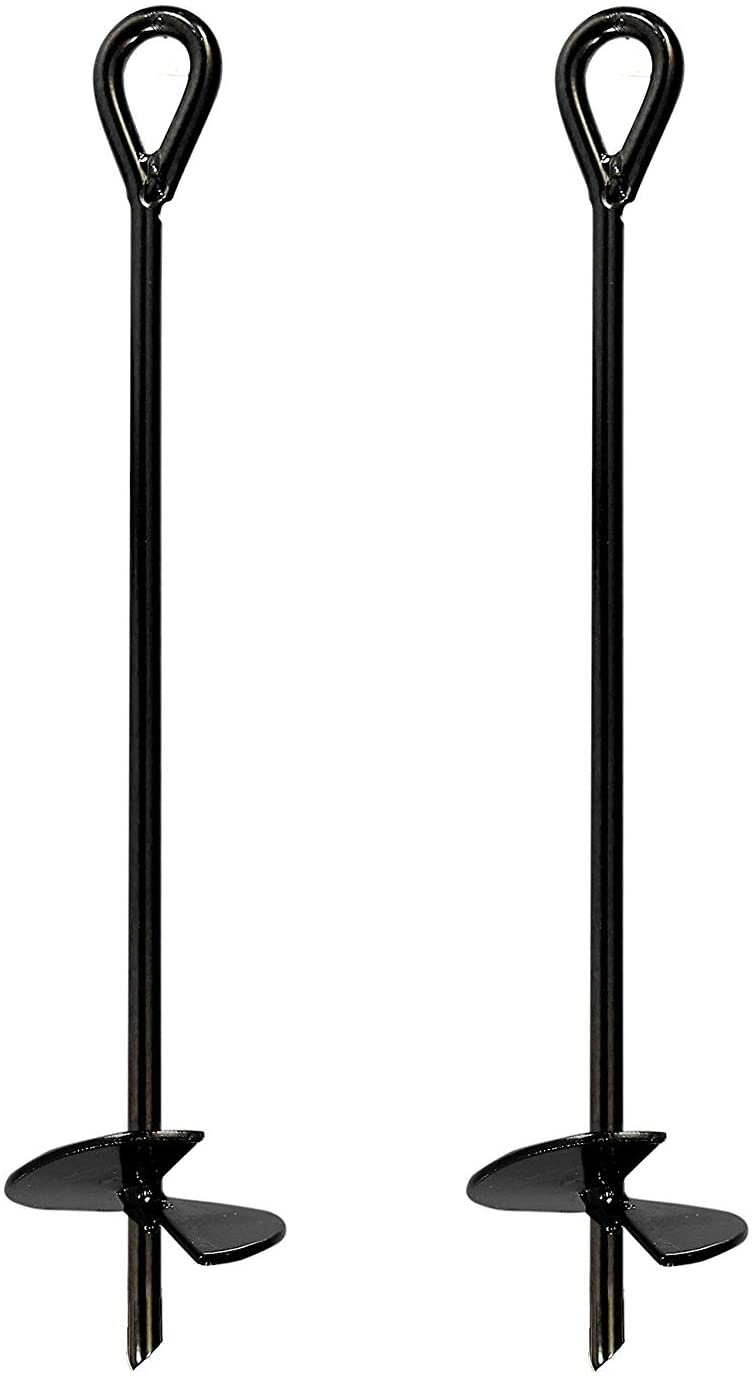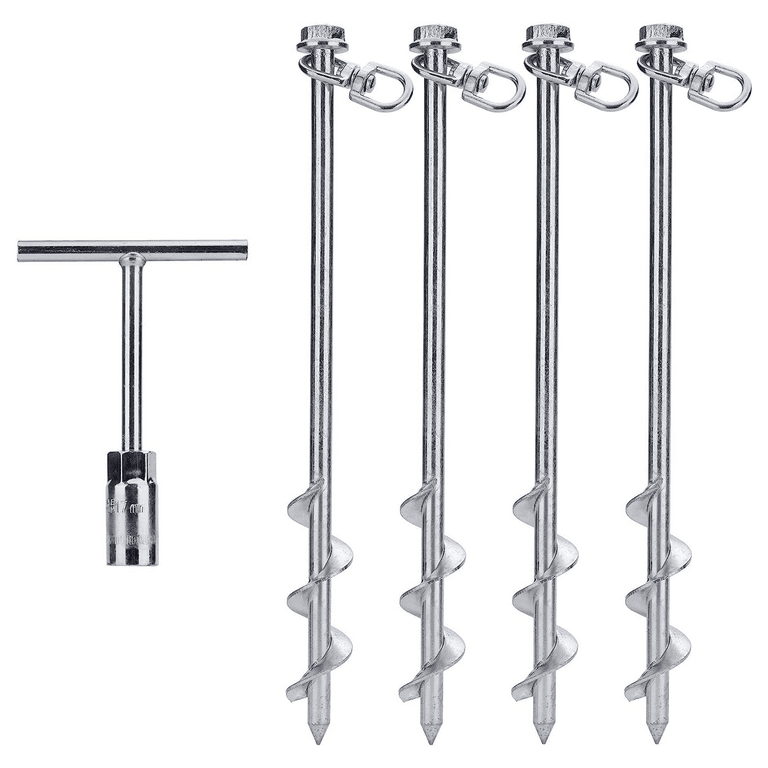The Science Behind a Strong Ground Anchor System
The Science Behind a Strong Ground Anchor System
Blog Article
Check Out the Various Sorts Of Ground Anchor for Your Following Task
When beginning on a building or landscape design project, understanding the different types of ground supports offered is crucial to making certain both stability and sturdiness (Ground Anchor). From auger supports, which excel in diverse soil conditions, to stake supports developed for short-lived setups, the choices are various. Additionally, concrete and screw supports existing unique benefits in specific situations, while deadman supports are tailored for applications requiring resistance to lateral forces. The option of a suitable support type can substantially influence the total success of your project, motivating more exploration into their respective benefits and applications.

Auger Anchors
Auger supports are a popular choice in different construction and landscaping tasks due to their special design and reliable anchoring abilities. These supports contain a helical screw-like shaft that is driven right into the ground, enabling a steady and secure hold. The spiral layout promotes simple setup and maximizes resistance against side pressures, making auger supports especially efficient in applications such as secure fencing, short-term frameworks, and disintegration control.
The setup process of auger supports is reasonably simple. Auger supports can be quickly eliminated and recycled, which adds to their cost-effectiveness and sustainability.
Among the substantial advantages of auger anchors is their capability to disperse loads evenly throughout the bordering soil, decreasing the risk of soil disturbance and reducing environmental effect. In addition, they are much less at risk to loosening up or heaving over time compared to traditional securing methods. Auger supports are a superb selection for tasks requiring long lasting and dependable anchoring services.

Risk Anchors
When it involves safeguarding structures in a selection of exterior applications, stake anchors use a uncomplicated and reliable service. These anchors are commonly created from sturdy materials such as steel or aluminum, designed to stand up to environmental stresses while offering optimum security. Their easy design enables quick installment, making them an excellent choice for short-lived or irreversible anchoring needs.
Stake supports are particularly beneficial in protecting camping tents, covers, and various other lightweight frameworks versus wind and climate. They operate by being driven right into the ground at an angle, developing a strong hold that withstands pull-out pressures - Ground Anchor. The performance of risk supports relies on several factors, consisting of soil kind, wetness content, and the angle of installment
For included security, numerous stake supports feature accessory factors for straps or ropes, permitting tension changes as required. In applications such as landscaping or building, they can efficiently support equipment or structures on unequal surface. Generally, risk supports give a functional and economical remedy for safeguarding various outdoor installations, making them a favored choice for contractors and DIY lovers alike.
Concrete Anchors
Concrete anchors offer a robust remedy for securing structures to concrete surfaces, guaranteeing security and safety and security in numerous applications. These supports are essential for jobs varying from property buildings to large-scale industrial installations. They can be found in various types, including growth anchors, sticky anchors, and undercut supports, each developed for particular lots requirements and environmental problems.
When mounted,Expansion supports rely on mechanical systems to hold click to read more the concrete. They are perfect for medium to durable applications. Adhesive supports make use of high-strength epoxy or material to bond the support to the concrete, offering superior load-bearing capacities, particularly in cracked concrete situations. Undercut supports develop an unique form within the concrete, offering phenomenal holding power, especially in applications where tensile loads prevail.
Selecting the appropriate concrete anchor entails considering elements such as the weight of the lots, the problem of the concrete, and environmental conditions. Correct installation strategies are crucial to guarantee ideal efficiency and integrity. When executed correctly, concrete anchors dramatically improve the structural stability of various jobs, making them essential in contemporary building techniques. Comprehending the particular requirements of your task will certainly assist in selecting the right type of concrete anchor for the task.
Screw Anchors

Screw anchors are a flexible attaching solution that can be effectively used in a range of applications where conventional concrete supports might not be sufficient. These supports contain a helical layout that enables them to be quickly driven into the ground, making them optimal for use in soil and various other substrates. Their special framework provides superb holding power and resistance to pull-out forces, making them ideal for many jobs, from landscaping to architectural assistance.
One of the key benefits of screw anchors is their ease of installation. They call for minimal get more tools and can commonly be set up without the requirement for excavation, which conserves both time and labor prices. Furthermore, screw anchors can be eliminated and reused, providing a lasting remedy for short-term applications.
Screw supports are particularly helpful in areas where soil conditions are challenging, such as loosened or sandy dirts. Their capability to be mounted at varying depths permits customization based upon particular task demands. Generally, screw anchors offer a reliable and trustworthy securing technique, making them a superb selection for specialists and designers seeking reliable solutions for their jobs.
Deadman Anchors
Deadman anchors act as a durable remedy for maintaining structures in difficult problems, particularly where standard securing approaches might drop brief. These supports consist of huge, heavy things buried underground, which produce resistance versus lateral pressures. The layout normally includes a straight part, such as a block of concrete or a metal plate, buried in the soil, to which wires or straps are connected.
The performance of deadman anchors hinges on their ability to disperse tons over a bigger location, lowering the threat of failing in unsteady dirt conditions. They are especially advantageous in applications such as preserving walls, temporary frameworks, and incline stablizing, where dirt movement can endanger the honesty of the structure.
Installment of deadman supports requires careful planning to guarantee they are placed at the proper depth and orientation, maximizing their load-bearing capacity. While they might call for more labor and material than lightweight supports, their dependability in negative problems makes them invaluable for long-term projects. Deadman anchors are functional and can be adjusted to numerous applications, making them a go-to choice for designers dealing with unique challenges in their tasks.
Conclusion
In recap, selecting the proper sort of ground support is vital for guaranteeing stability and security in numerous jobs. Auger anchors master diverse dirt conditions, while stake anchors match temporary applications. For concrete surface areas, expansion and adhesive anchors offer trustworthy alternatives, and screw anchors provide adaptability in difficult terrains. Deadman supports are especially effective in withstanding side forces for preserving wall surfaces. Careful consideration of these choices will improve task outcomes and structural integrity.
In addition, concrete and page screw anchors present special benefits in details scenarios, while deadman anchors are tailored for applications calling for resistance to lateral forces - Ground Anchor.Auger supports are a preferred option in numerous construction and landscaping projects due to their distinct design and efficient anchoring abilities. They come in various kinds, consisting of development supports, glue supports, and undercut anchors, each made for details load requirements and ecological problems
Glue supports use high-strength epoxy or material to bond the anchor to the concrete, supplying superior load-bearing capacities, particularly in split concrete scenarios. On the whole, screw supports give a trusted and efficient anchoring method, making them an excellent choice for engineers and specialists seeking reliable services for their tasks.
Report this page